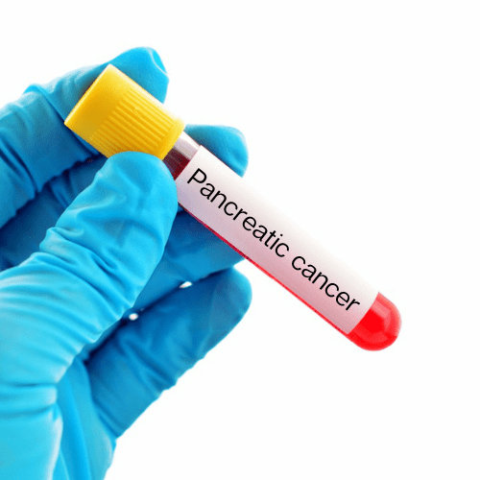Adenomyosis is a complex and often overlooked gynecological condition that significantly impacts women’s health. This disorder occurs when tissue similar to the uterine lining grows into the muscular wall of the uterus, leading to a range of distressing symptoms, including heavy menstrual bleeding and severe pelvic pain. As we navigate through 2024, raising adenomyosis awareness becomes crucial for early diagnosis and effective management of its symptoms. Understanding the differences between adenomyosis vs endometriosis is also vital, as these two conditions share similarities but require distinct treatment approaches. This article will provide valuable insights into adenomyosis symptoms, diagnosis, and treatment options, empowering women to seek the care they deserve.
Adenomyosis, commonly referred to as uterine adenomyosis, is a condition that often confuses many due to its similarities with endometriosis. This health issue entails the abnormal growth of endometrial tissue within the uterine muscle, leading to painful and disruptive symptoms that can affect daily life. Understanding the nuances of adenomyosis is essential for effective diagnosis, as many women may experience overlapping symptoms that complicate their treatment journey. Raising awareness about this condition is critical, as it encourages conversations about women’s reproductive health and promotes timely medical intervention. In this article, we will explore the various symptoms, diagnostic methods, and treatment options available for those dealing with adenomyosis.
Understanding Adenomyosis Symptoms
Adenomyosis presents a variety of symptoms that can significantly impact a woman’s quality of life. The most common symptom is heavy menstrual bleeding, also known as menorrhagia, where women may experience unusually heavy periods, often accompanied by large blood clots. In addition to heavy bleeding, severe pelvic pain and cramping can occur, which may begin days before menstruation and continue throughout the cycle. This chronic pain can be debilitating, leading to missed workdays and social engagements, creating a ripple effect on mental health and emotional well-being.
Moreover, women with adenomyosis often report pain during intercourse, a condition known as dyspareunia, which can strain intimate relationships. Chronic fatigue is another prevalent symptom that stems from the combination of pain and excessive bleeding, leaving many women feeling drained and overwhelmed. Understanding these symptoms is crucial, as they can help in identifying adenomyosis early and seeking appropriate medical advice.
Advancements in Adenomyosis Diagnosis
Diagnosing adenomyosis has traditionally been a challenging process, often requiring invasive procedures such as hysterectomy for a definitive diagnosis. However, recent advancements in imaging techniques have revolutionized the way healthcare providers can identify this condition. Transvaginal ultrasound (TVUS) and magnetic resonance imaging (MRI) are now the gold standards for diagnosis. These non-invasive methods are particularly effective at visualizing the abnormal growth of endometrial tissue within the uterine wall, allowing for a more accurate assessment of the condition.
Additionally, the understanding that adenomyosis frequently coexists with other gynecological conditions, such as endometriosis and uterine fibroids, has led to improved diagnostic protocols. Studies indicate that adenomyosis can occur simultaneously with these conditions in a significant number of cases, which underscores the importance of comprehensive evaluation for accurate diagnosis. This evolution in diagnostic processes not only aids in identifying adenomyosis but also enhances the overall treatment strategies for affected women.
Effective Treatment Options for Adenomyosis
When it comes to treating adenomyosis, there are several options available that cater to different patient needs. Non-surgical therapies have gained popularity, with hormonal treatments being a primary focus. These therapies work by regulating the hormonal levels in a woman’s body, which can help alleviate symptoms such as heavy bleeding and pelvic pain. Furthermore, uterine artery embolization, a procedure that blocks blood flow to the problematic tissue, is emerging as a promising treatment for adenomyosis, offering symptom relief without the need for invasive surgery.
On the surgical front, while hysterectomy remains a common solution, there is a growing trend towards uterine-sparing procedures. These approaches allow for symptom management without removing the uterus, preserving fertility options for women who may wish to conceive in the future. The shift towards more nuanced treatment strategies highlights the importance of personalized care in managing adenomyosis, ensuring that women have access to options that align with their health goals and lifestyle.
Adenomyosis vs Endometriosis: Key Differences
Both adenomyosis and endometriosis involve the presence of endometrial tissue, but they differ significantly in their locations and implications for treatment. Adenomyosis occurs when this tissue grows into the muscular wall of the uterus, leading to symptoms that primarily affect menstruation and pelvic health. In contrast, endometriosis is characterized by the growth of similar tissue outside the uterus, often causing pain in the pelvic region and potentially affecting fertility. Understanding these differences is essential for accurate diagnosis and effective management.
Distinguishing between adenomyosis and endometriosis can sometimes be complex, as both conditions can coexist. However, accurate diagnosis is crucial; treatment strategies for adenomyosis may focus more on symptom management and preserving the uterus, while endometriosis often requires a multifaceted approach that may include surgery to remove lesions. Increased awareness of these conditions among healthcare providers and patients alike is vital to ensure that women receive the appropriate care tailored to their specific health needs.
The Importance of Adenomyosis Awareness
Adenomyosis awareness has been gaining traction in recent years, helping to shed light on this often-overlooked condition. Increased public discussions and media coverage are critical in educating individuals about the symptoms and implications of adenomyosis. As more resources become available, women are encouraged to recognize their symptoms and seek medical advice, which can lead to earlier diagnoses and better management outcomes. The impact of awareness is profound, as it not only informs patients but also empowers them to advocate for their health.
Furthermore, raising awareness contributes to reducing the stigma surrounding reproductive health issues. Personal stories shared by those affected by adenomyosis serve as powerful testimonies, emphasizing the need for improved understanding within the medical community and society at large. As awareness continues to grow, it is hoped that more women will feel comfortable discussing their experiences, leading to better support systems and healthcare solutions tailored to their needs.
Frequently Asked Questions
What are the common adenomyosis symptoms that women should be aware of?
Common adenomyosis symptoms include heavy menstrual bleeding, severe pelvic pain and cramping, pain during intercourse, and chronic fatigue. Recognizing these symptoms is crucial for early diagnosis and effective management of adenomyosis.
How is adenomyosis diagnosed using advanced imaging techniques?
Adenomyosis is often diagnosed through advanced imaging techniques like transvaginal ultrasound (TVUS) and magnetic resonance imaging (MRI). These methods are effective in detecting adenomyosis, especially since it frequently coexists with conditions such as endometriosis and uterine fibroids.
What are the latest adenomyosis treatment options available in 2024?
In 2024, adenomyosis treatment options include non-surgical therapies such as hormonal treatments and uterine artery embolization. Surgical options like hysterectomy are still common, but there is a growing trend towards uterine-sparing approaches to help manage symptoms while preserving the uterus.
What is the difference between adenomyosis and endometriosis?
Adenomyosis occurs when endometrial tissue grows into the uterine muscle, while endometriosis involves similar tissue growing outside the uterus. Understanding this distinction is essential for proper diagnosis and treatment of both conditions.
How can increased adenomyosis awareness impact diagnosis and treatment?
Increased adenomyosis awareness leads to better recognition of symptoms, resulting in earlier diagnosis and improved treatment outcomes. Public discussions and educational efforts help reduce stigma and enhance understanding of this often-misunderstood condition.
| Key Point | Details |
|---|---|
| What is Adenomyosis? | A condition where endometrial tissue grows into the uterine muscle, causing various health issues. |
| Common Symptoms | Heavy menstrual bleeding, severe pelvic pain, pain during intercourse, and chronic fatigue. |
| Diagnosis Advancements | Utilization of advanced imaging techniques like transvaginal ultrasound and MRI has improved diagnosis. |
| Treatment Options | Non-surgical therapies (hormonal treatments, uterine artery embolization) and surgical options (hysterectomy, uterine-sparing approaches). |
| Awareness and Education | Increased public knowledge has led to earlier diagnosis and improved management outcomes. |
| Comparison with Endometriosis | Adenomyosis is characterized by tissue growing within the uterus, unlike endometriosis, where tissue grows outside the uterus. |
| Personal Experiences | Personal accounts highlight the struggles for accurate diagnoses and the impact of adenomyosis on life. |
Summary
Adenomyosis is a complex gynecological condition that affects many women’s lives. It is characterized by the abnormal growth of endometrial tissue into the uterine muscle, resulting in painful symptoms such as heavy bleeding and pelvic pain. Recent advancements in diagnosis, particularly through improved imaging techniques, allow for more accurate identification of the condition. Furthermore, treatment options have evolved to include non-invasive therapies alongside traditional surgical methods, providing patients with a range of management strategies. The growing awareness and education surrounding adenomyosis are crucial in supporting individuals affected by this condition, leading to earlier diagnoses and better treatment outcomes.
The content provided on this blog (e.g., symptom descriptions, health tips, or general advice) is for informational purposes only and is not a substitute for professional medical advice, diagnosis, or treatment. Always seek the guidance of your physician or other qualified healthcare provider with any questions you may have regarding a medical condition. Never disregard professional medical advice or delay seeking it because of something you have read on this website. If you believe you may have a medical emergency, call your doctor or emergency services immediately. Reliance on any information provided by this blog is solely at your own risk.








